|
Crichton Castle is located within 15 miles of Edinburgh's city centre and yet, you would be forgiven for believing yourself cut off from civilisation. Nothing, in this valley of the River Tyne comes to disturb the tranquility of this forgotten site. Crichton Castle was at the centre of the Barony of Crichton from where the first residents took their surname. John de Crichton probably began developing the site in Robert III's reign (1390- 1406). As succeeding generations came and went, so his castle was adapted to meet their changing needs. The nucleus of the first castle was the tower house. It served as John de Crichton's private lodging and was originally four storeys high but the topmost storey has all but been removed. |
|
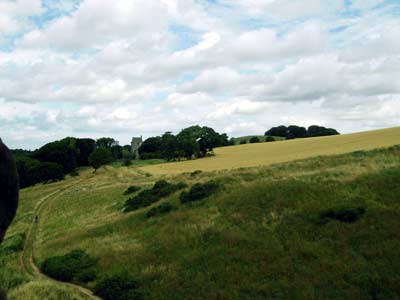 |
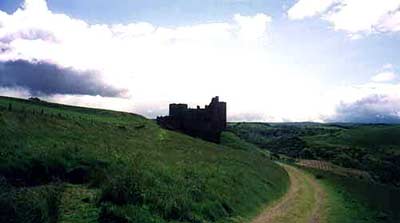 |
|
Crichton Castle was among a number of properties bestowed in 1488 by James IV on the Earl of Bothwell. Over the following century Crichton was largely by-passed by the main flow of Scottish history, though it was successfully besieged by Protestant Lords in 1559 after the 4th Earl of Bothwell intercepted 4000 English crowns sent by Queen Elizabeth to help fund the Protestant cause. The 4th Earl, James Hepburn, is better known for becoming Mary Queen of Scot's third husband in May 1567, precipitating her fall from grace and her abdication. Click here to see a reconstruction of the castle. |
|
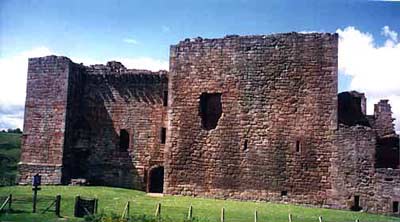 |
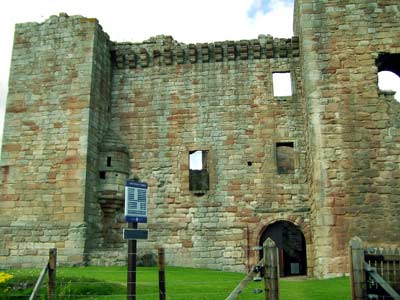 |
|
When Francis Stewart, 5th Earl of Bothwell and Lord of Crichton, returned from Italy in 1581 he set about transforming the castle into a most attractive Renaissance mansion. Although his handiwork can be seen at various points throughout the castle, it was here on the north side of the courtyard that he built a splendid new lodging for himself. Both in its planning and its execution, it is a remarkable building. The lodging consisted of three storeys and an attic. At courtyard level were the cellars; on the first floor were the public rooms and the kitchens; on the floors above were the private rooms. All were reached by a scale-and-platt stair (ie, a straight stair, not the more traditional spiral stair) - one of the first of this type to appear in Scotland. |
|
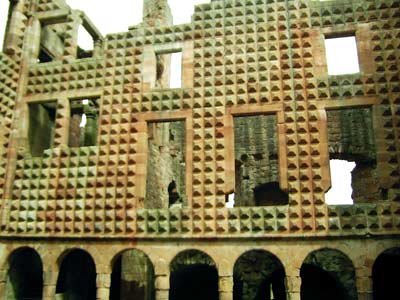 |
 |
|
James Hepburn, 4th Earl of Bothwell, succeeded to numerous titles and a vast estate in 1556. As well as being an Earl, he was also Lord of Crichton, Hailes and Liddesdale, Lord High Admiral of Scotland, Sheriff of Berwickshire, East and Mid Lothian, and Baillie of Lauderdale. Bothwell had extensive estates in eight shires and also possessed three castles. The Earl of Bothwell was one of the most important nobles in Scotland. By arranging and hosting the marriage of his sister, Lady Janet Hepburn, to Lord John Stewart, half-brother of Mary Queen of Scots, the Earl further enhanced his prestige. Mary Queen of Scots had a great love of weddings and their associated festivities. At Crichton, she attended a Protestant marriage service, a sign of her desire to conciliate her subjects. Bothwell's great marriage feast of venison, rabbit, partridge, plover, moor fowl, duck and goose may have impressed the Queen less than the entertainment which followed. |
|
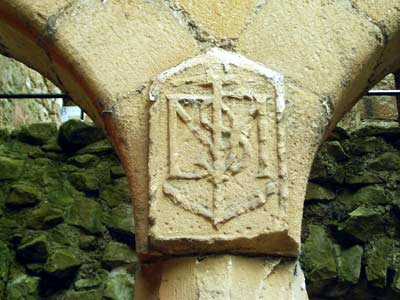 |
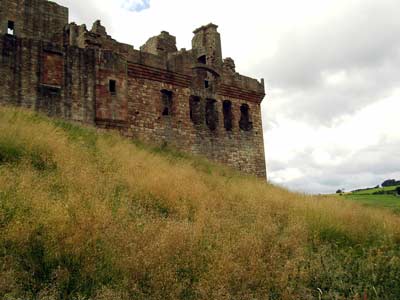 |
|
Click HERE to see more of Crichton... |
|